- Home
- Neal Stephenson
Mother Earth Mother Board Page 7
Mother Earth Mother Board Read online
Page 7
In any case, the deal fell through because of a strong anti-FLAG faction within KDD that could not tolerate the notion of giving any concessions whatever to IDC. There it stalemated until FLAG managed to cut a deal with China Telecom to run a full-bore 10.6 Gbps spur straight into Shanghai. While China has other undersea cable connections, they are tiny compared with FLAG, which is now set to be the first big cable, as well as the first modern Internet connection, into China.
At this point it became obvious that KDD absolutely had to get in on the FLAG action no matter what the cost, and so it returned to the bargaining table - but this time, IDC, sensing that it had an overpoweringly strong hand, wanted much tougher conditions. Eventually, though, the deal was made, and now jumpsuited workers are preparing rooms at both Ninomiya and Miura to receive the new equipment racks, much like expectant parents wallpapering the nursery.= At Ninomiya, an immense cross-connect will be built between FLAG and TPC-5, and Miura will house a cross-connect between FLAG and the smaller NPC cable.
The two companies will end up on an equal footing as far as FLAG is concerned, but the crucial strategic misstep has already been made by KDD: by letting IDC be the first to land FLAG, it has given its rival a chance to acquire a great deal of experience in the business. It is not unlike the situation that now exists between AT&T, which used to be the only company big and experienced enough to put together a major international cable, and Nynex, which has now managed to get its foot in that particular door and is rapidly gaining the experience and contacts needed to compete with AT&T in the future.
Hazards
Dr. Wildman Whitehouse and his 5-foot-long induction coils were the first hazard to destroy a submarine cable but hardly the last. It sometimes seems as though every force of nature, every flaw in the human character, and every biological organism on the planet is engaged in a competition to see which can sever the most cables. The Museum of Submarine Telegraphy in Porthcurno, England, has a display of wrecked cables bracketed to a slab of wood. Each is labeled with its cause of failure, some of which sound dramatic, some cryptic, some both: trawler maul, spewed core, intermittent disconnection, strained core, teredo worms, crab's nest, perished core, fish bite, even "spliced by Italians." The teredo worm is like a science fiction creature, a bivalve with a rasp-edged shell that it uses like a buzz saw to cut through wood - or through submarine cables. Cable companies learned the hard way, early on, that it likes to eat gutta-percha, and subsequent cables received a helical wrapping of copper tape to stop it.
A modern cable needn't be severed to stop working. More frequently, a fault in the insulation will allow seawater to leak in and reach the copper conductor that carries power to the repeaters. The optical fibers are fine, but the repeater stops working because its power is leaking into the ocean. The interaction of electricity, seawater, and other chemical elements present in the cable can produce hydrogen gas that forces its way down the cable and chemically attacks the fiber or delicate components in the repeaters.
Cable failure can be caused by any number of errors in installation or route selection. Currents, such as those found before the mouths of rivers, are avoided. If the bottom is hard, currents will chafe the cable against it - and currents and hard bottoms frequently go together because currents tend to scour sediments away from the rock. If the cable is laid with insufficient slack, it may become suspended between two ridges, and as the suspended part rocks back and forth, the ridges eventually wear through the insulation. Sand waves move across the bottom of the ocean like dunes across the desert; these can surface a cable, where it may be bruised by passing ships. Anchors are a perennial problem that gets much worse during typhoons, because an anchor that has dropped well away from a cable may be dragged across it as the ship is pushed around by the wind.
In 1870, a new cable was laid between England and France, and Napoleon III used it to send a congratulatory message to Queen Victoria. Hours later, a French fisherman hauled the cable up into his boat, identified it as either the tail of a sea monster or a new species of gold-bearing seaweed, and cut off a chunk to take home. Thus was inaugurated an almost incredibly hostile relationship between the cable industry and fishermen. Almost anyone in the cable business will be glad, even eager, to tell you that since 1870 the intelligence and civic responsibility of fisherman have only degraded. Fishermen, for their part, tend to see everyone in the cable business as hard-hearted bluebloods out to screw the common man.
Most of the fishing-related damage is caused by trawlers, which tow big sacklike nets behind them. Trawlers seem designed for the purpose of damaging submarine cables. Various types of hardware are attached to the nets. In some cases, these are otter boards, which act something like rudders to push the net's mouth open. When bottom fish such as halibut are the target, a massive bar is placed across the front of the net with heavy tickler chains dangling from it; these flail against the bottom, stirring up the fish so they will rise up into the maw of the net.
Mere impact can be enough to wreck a cable, if it puts a leak in the insulation. Frequently, though, a net or anchor will snag a cable. If the ship is small and the cable is big, the cable may survive the encounter. There is a type of cable, used up until the advent of optical fiber, called 21-quad, which consists of 21 four-bundle pairs of cable and a coaxial line. It is 15 centimeters in diameter, and a single meter of it weighs 46 kilograms. If a passing ship should happen to catch such a cable with its anchor, it will follow a very simple procedure: abandon it and go buy a new anchor.
But modern cables are much smaller and lighter - a mere 0.85 kg per meter for the unarmored, deep-sea portions of the FLAG cable - and the ships most apt to snag them, trawlers, are getting bigger and more powerful. Now that fishermen have massacred most of the fish in shallower water, they are moving out deeper. Formerly, cable was plowed into the bottom in water shallower than 1,000 meters, which kept it away from the trawlers. Because of recent changes in fishing practices, the figure has been boosted to 2,000 meters. But this means that the old cables are still vulnerable.
When a trawler snags a cable, it will pull it up off the seafloor. How far it gets pulled depends on the weight of the cable, the amount of slack, and the size and horsepower of the ship. Even if the cable is not pulled all the way to the surface, it may get kinked - its minimum bending radius may be violated. If the trawler does succeed in hauling the cable all the way up out of the water, the only way out of the situation, or at least the simplest, is to cut the cable. Dave Handley once did a study of a cable that had been suddenly and mysteriously severed. Hauling up the cut end, he discovered that someone had sliced through it with a cutting torch.
There is also the obvious threat of sabotage by a hostile government, but, surprisingly, this almost never happens. When cypherpunk Doug Barnes was researching his Caribbean project, he spent some time looking into this, because it was exactly the kind of threat he was worried about in the case of a data haven. Somewhat to his own surprise and relief, he concluded that it simply wasn't going to happen. "Cutting a submarine cable," Barnes says, "is like starting a nuclear war. It's easy to do, the results are devastating, and as soon as one country does it, all of the others will retaliate.
"Bert Porter, a Cable & Wireless cable-laying veteran who is now a freelancer, was beachmaster for the Tong Fuk lay. He was on a ship that laid a cable from Hong Kong to Singapore during the late 1960s. Along the way they passed south of Lan Tao Island, and so the view from Tong Fuk Beach is a trip down memory lane for him. "The repeater spacing was about 18 miles," he says, "and so the first repeater went into the water right out there. Then, a few days later, the cable suddenly tested broken." In other words, the shore station in Hong Kong had lost contact with the equipment on board Porter's cable ship. In such cases it's easy to figure out roughly where the break occurred - by measuring the resistance in the cable's conductors - and they knew it had to be somewhere in the vicinity of the first repeater. "So we backtracked, pulling up cable, and when we got righ
t out there," he waves his hand out over the bay, "we discovered that the repeater had simply been chopped out." He holds his hands up parallel, like twin blades. "Apparently the Chinese were curious about our repeaters, so they thought they'd come out and get one."
As the capacity of optical fibers climbs, so does the economic damage caused when the cable is severed. FLAG makes its money by selling capacity to long-distance carriers, who turn around and resell it to end users at rates that are increasingly determined by what the market will bear. If FLAG gets chopped, no calls get through. The carriers' phone calls get routed to FLAG's competitors (other cables or satellites), and FLAG loses the revenue represented by those calls until the cable is repaired. The amount of revenue it loses is a function of how many calls the cable is physically capable of carrying, how close to capacity the cable is running, and what prices the market will bear for calls on the broken cable segment. In other words, a break between Dubai and Bombay might cost FLAG more in revenue loss than a break between Korea and Japan if calls between Dubai and Bombay cost more.
The rule of thumb for calculating revenue loss works like this: for every penny per minute that the long distance market will bear on a particular route, the loss of revenue, should FLAG be severed on that route, is about $3,000 a minute. So if calls on that route are a dime a minute, the damage is $30,000 a minute, and if calls are a dollar a minute, the damage is almost a third of a million dollars for every minute the cable is down. Upcoming advances in fiber bandwidth may push this figure, for some cables, past the million-dollar-a-minute mark.
Clearly, submarine cable repair is a good business to be in. Cable repair ships are standing by in ports all over the world, on 24-hour call, waiting for a break to happen somewhere in their neighborhood. They are called agreement ships. Sometimes, when nothing else is going on, they will go out and pull up old abandoned cables. The stated reason for this is that the old cables present a hazard to other ships. However, if you do so much as raise an eyebrow at this explanation, any cable man will be happy to tell you the real reason: whenever a fisherman snags his net on anything - a rock, a wreck, or even a figment of his imagination - he will go out and sue whatever company happens to have a cable in that general vicinity. The cable companies are waiting eagerly for the day when a fisherman goes into court claiming to have snagged his nets on a cable, only to be informed that the cable was pulled up by an agreement ship years before.
In which the Hacker Tourist delights in Cairo, the Mother of the World. Alexandria, the former Hacker Headquarters of the planet.
The lighthouse, the libraries, and other haunts of ancient nerds and geeks. Profound significanceof intersections. Travels on the Desert Road. Libya's contact with the outside world rudely severed - then restored! Engineer Musalamand his planetary information nexus. The vitally important concept of Slack
31° 12.841' N, 29° 53.169' ESite of the Pharos lighthouse, Alexandria, Egypt
Having stood on the beach of Miura watching those miserable-but-plucky Japanese surfers, the hacker tourist had reached FLAG's easternmost extreme, and there was nothing to do except turn around and head west. Next stop: Egypt.
No visit to Egypt is complete without a stop in Cairo, but that city, the pinnacle of every normal tourist's traveling career, is strangely empty from a hacker tourist point of view. Its prime attraction, of course, is the pyramids. We visited them at five in the morning during a long and ultimately futile wait for the Egyptian military to give us permission to rendezvous with FLAG's cable-laying ship in the Gulf of Suez. To the hacker, the most interesting thing about the Pyramids is their business plan, which is the simplest and most effective ever devised:
(1) Put a rock on top of another rock.
(2) Repeat (1) until gawkers arrive.
(3) Separate them from their valuables by all conceivable means.
By contrast, normal tourist guidebooks have nothing good to say about Alexandria; it's as if the writers got so tired of marveling at Cairo and Upper Egypt that they had to vent their spleen somewhere. Though a town was here in ancient times, Alexandria per se was founded in 332 BC by Alexander the Great, which makes it a brand-new city by Egyptian standards. There is almost no really old stuff in Alexandria at all, but the mere memory of the landmarks that were here in its heyday suffice to make it much more important than Cairo from the weirdly distorted viewpoint of the hacker tourist. These landmarks are, or were, the lighthouse and the libraries.
The lighthouse was built on the nearby island of Pharos. Neither the building nor even the island exists any more. Pharos was eventually joined to the mainland by a causeway, which fattened out into a peninsula and became a minuscule bump on the scalp of Africa. The lighthouse was an immense structure, at some 120 meters the tallest building in the world for many centuries, and contained as many as 300 rooms. Somewhere in its upper stories a fire burned all night long, and its light was reflected out across the Mediterranean by some kind of rotating mirror or prism. This was a fine bit of ancient hacking in and of itself, but according to legend, the optics also had magnifying properties, so that observers peering through it during the daytime could see ships too distant to be perceived by the naked eye.
According to legend, this feature made Alexandria immune to naval assault as long as the lighthouse remained standing. According to another yarn, a Byzantine emperor spread a rumor that the treasure of Alexander the Great had been hidden within the lighthouse's foundation, and the unbelievably fatuous local caliph tore up the works looking for it, putting Pharos out of commission and leading to a military defeat by the Byzantine Empire.
Some combination or other of gullible caliphs, poor maintenance, and earthquakes eventually did fell the lighthouse. Evidently it toppled right into the Mediterranean. The bottom of the sea directly before its foundations is still littered with priceless artifacts, which are being catalogued and hauled out by French archaeologists using differential GPS to plot their findings. They work in the shadow of a nondescript fortress built on the site by a later sultan, Qait Bey, who pragmatically used a few chunks of lighthouse granite to beef up the walls - just another splinter under the fingernails of the historical preservation crowd.
You can go to the fortress of Qait Bey now and stare out over the ocean and get much the same view that the builders of the lighthouse enjoyed. They must have been able to see all kinds of weirdness coming over the horizon from Europe and western Asia. The Mediterranean may look small on a world map, but from Pharos its horizon seems just as infinite as the Pacific seen from Miura. Back then, knowing how much of the human world was around the Mediterranean, the horizon must have seemed that much more vast, threatening, and exciting to the Alexandrians.
Building the lighthouse with its magic lens was a way of enhancing the city's natural capability for looking to the north, which made it into a world capital for many centuries. It's when a society plunders its ability to look over the horizon and into the future in order to get short-term gain - sometimes illusory gain - that it begins a long slide nearly impossible to reverse.
The collapse of the lighthouse must have been astonishing, like watching the World Trade Center fall over. But it took only a few seconds, and if you were looking the other way when it happened, you might have missed it entirely - you'd see nothing but blue breakers rolling in from the Mediterranean, hiding a field of ruins, quickly forgotten.
31° 11.738' N, 29° 54.108' EIntersection of El Horreya and El Nabi Daniel, Alexandria, Egypt
Alexandria is most famous for having been the site of the ancient library. This was actually two or more different libraries. The first one dates back to the city's early Ptolemaic rulers, who were Macedonians, not Egyptians. It was modeled after the Lyceum of Aristotle, who, between other gigs, tutored Alexander the Great. Back in the days when people moved to information, instead of vice versa, this library attracted most of the most famous smart people in the world: the ultimate hacker, Archimedes; the father of geometry, Euclid; Eratosthenes, who was
the first person to calculate the circumference of the earth, by looking at the way the sun shone down wells at Alexandria and Aswøan. He also ran the library for a while and took the job seriously enough that when he started to go blind in his old age, he starved himself to death. In any event, this library was burned out by the Romans when they were adding Egypt to their empire. Or maybe it wasn't. It's inherently difficult to get reliable information about an event that consisted of the destruction of all recorded information.
The second library was called the Library of Cleopatra and was built around a couple of hundred thousand manuscripts that were given to her by Marc Antony in what was either a magnificent gesture of romantic love or a shrewd political maneuver. Marc Antony suffered from what we would today call "poor impulse control," so the former explanation is more likely. This library was wiped out by Christians in AD 391. Depending on which version of events you read, its life span may have overlapped with that of the first library for a few years, a few decades, or not at all.
Whether or not the two libraries ever existed at the same time,
the fact remains that between about 300 BC and AD 400, Alexandria was by far the world capital of high-quality information. It must have had much in common with the MIT campus or Stanford in Palo Alto of more recent times: lots of hairy smart guys converging from all over the world to tinker with the lighthouse or to engage in pursuits that must have been totally incomprehensible to the locals, such as staring down wells at high noon and raving about the diameter of the earth.

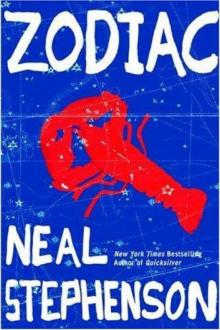 Zodiac: The Eco-Thriller
Zodiac: The Eco-Thriller The Mongoliad: Book One
The Mongoliad: Book One Snow Crash
Snow Crash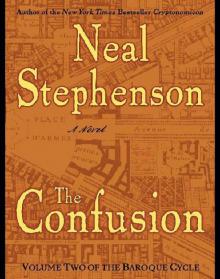 The Confusion: Volume Two of the Baroque Cycle
The Confusion: Volume Two of the Baroque Cycle The Rise and Fall of D.O.D.O.
The Rise and Fall of D.O.D.O.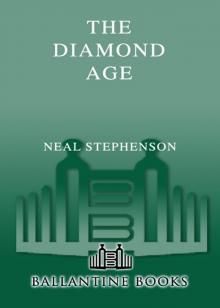 The Diamond Age: Or, a Young Lady's Illustrated Primer
The Diamond Age: Or, a Young Lady's Illustrated Primer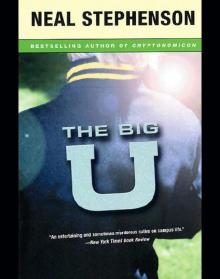 The Big U
The Big U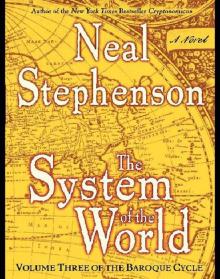 The System of the World: Volume Three of the Baroque Cycle
The System of the World: Volume Three of the Baroque Cycle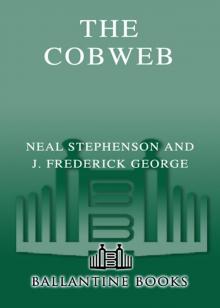 The Cobweb
The Cobweb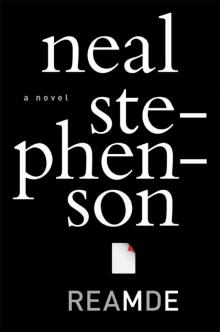 Reamde
Reamde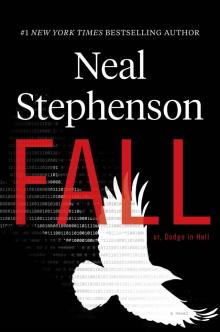 Fall; or, Dodge in Hell
Fall; or, Dodge in Hell Interface
Interface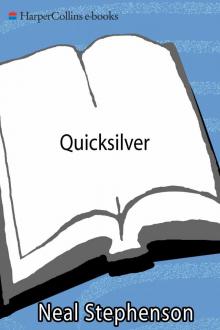 Quicksilver
Quicksilver The Mongoliad: Book Three
The Mongoliad: Book Three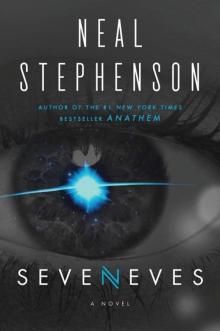 Seveneves
Seveneves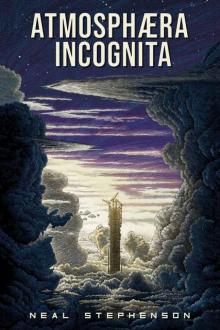 Atmosphæra Incognita
Atmosphæra Incognita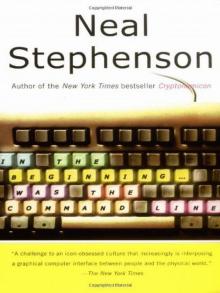 In the Beginning...Was the Command Line
In the Beginning...Was the Command Line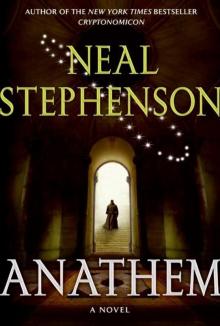 Anathem
Anathem The Rise and Fall of D.O.D.O.: A Novel
The Rise and Fall of D.O.D.O.: A Novel The Mongoliad: Book Two
The Mongoliad: Book Two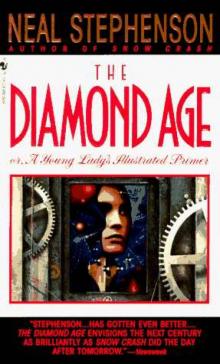 Diamond Age or a Young Lady's Illustrated Primer
Diamond Age or a Young Lady's Illustrated Primer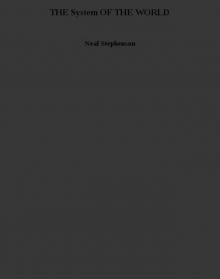 THE System OF THE WORLD
THE System OF THE WORLD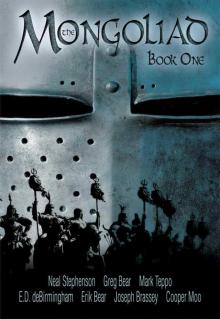 The Mongoliad: Book One tfs-1
The Mongoliad: Book One tfs-1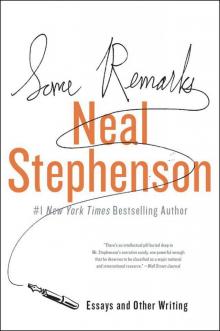 Some Remarks: Essays and Other Writing
Some Remarks: Essays and Other Writing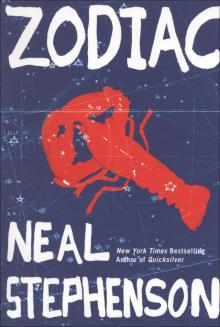 Zodiac
Zodiac Spew
Spew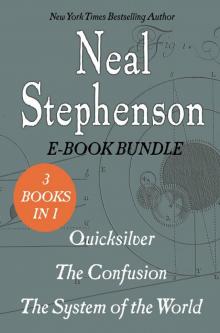 The Baroque Cycle: Quicksilver, the Confusion, and the System of the World
The Baroque Cycle: Quicksilver, the Confusion, and the System of the World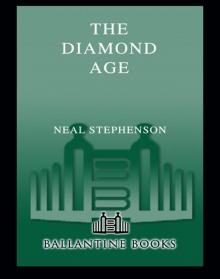 The Diamond Age
The Diamond Age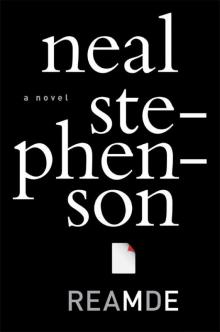 Reamde: A Novel
Reamde: A Novel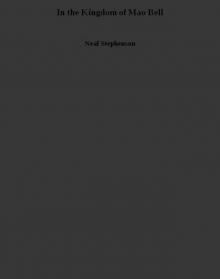 In the Kingdom of Mao Bell
In the Kingdom of Mao Bell Mother Earth Mother Board
Mother Earth Mother Board Twelve Tomorrows - Visionary stories of the near future inspired by today's technologies
Twelve Tomorrows - Visionary stories of the near future inspired by today's technologies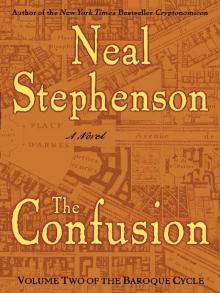 The Confusion
The Confusion The Great Simoleon Caper
The Great Simoleon Caper The Mongoliad: Book Three tfs-3
The Mongoliad: Book Three tfs-3